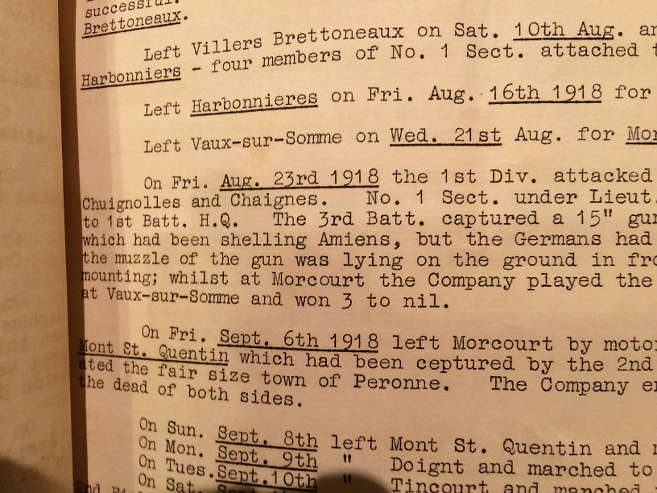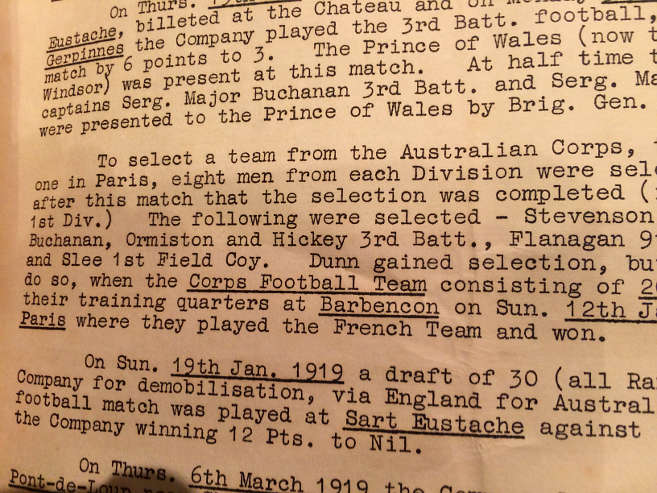One hundred years ago my Rugby playing grand-uncle Jim took his seat in a wooden boat. Having been brought up near the Parramatta River it is something he would have done countless times before.
Perhaps he had been out on the river in the pre-dawn darkness doing a spot of fishing with some of his teammates from the Gladesville Rugby Club.
His current predicament was a little different however. He was with mates for sure but this was no fishing trip. For starters, he was crammed in cheek by jowl with his neighbour. Instead of the casual clothing of a fisherman he was wearing khaki.
In the place of a fishing rod was a Lee-Enfield .303 bolt action rifle. On his back he carried a heavy pack. The boat and others like it were being towed by small steam pinnaces. Out across the black water of the Dardanelles in the weak pre-dawn glow, a land mass with steep cliffs could be just made out.
Apart from the reassuring rhythmic chug of the pinnace’s engine there was complete silence. Jim would have been aware of his heart pounding in his chest. In shallower water the tows were cast aside and the troops were rowed to the shore. From somewhere on land a single gun-shot rang out, echoing eerily in the darkness.
Another followed a few moments later then another. The game was up! The boats suddenly felt anything but comfortable.
As Jim’s boat made landfall he leapt out into waist deep water and scrambled ashore as one of the first New South Welshman to set foot on Gallipoli. This was about as far away from a Rugby match at Gladesville as he could have imagined.
In Rugby’s domestic season of 1915, competitive matches were scrapped and given over to scratch games between club sides every second week. On alternate weeks, military drills and parades of the rugby union Battalion were held and reported on as enthusiastically as the matches.
From a modern day perspective the zeal of rugby union officials for enlistment could almost appear as coercion or intimidation. On one of these parades, the Sydney Morning Herald reported that Major Buchanan “emphasised the need for every player to act as a recruiting sergeant.”
Regular matches were played between first grade clubs and the recruits in training at the Liverpool camp. Since there were many rugby players in the ranks, these games were particularly competitive. The military side once managed to draw with Manly.
In May 1915 the soldiers beat Newtown. Admittedly Newtown was understrength since some of the players caught the wrong train and got lost. Even today inner-city people tend to get lost heading out to the western suburbs.
In downtime from the trenches and in training camps in the UK, football matches were played whenever the troops got the chance. This is where a recent discovery adds some detail.
When helping my Dad with some cleaning we came across a typewritten document in an ageing manila folder. It was a brief unpublished history of my forebears unit, produced around the 1960’s as the veteran’s ranks were thinning. The anonymous author had a keen eye for sport.
Their NSW Engineers Company’s preference was rugby first and foremost but they were always up for a game of whatever was going. In April 1917 they played three football (rugby) matches and 2 games of soccer. In May they took part in a sports carnival near the town of Lavieville in France.
Here they lost two Australian Rules matches (for 15 against 165 – they might have played a Victorian unit), split a two game soccer series and won two matches of cricket. In the almost idyllic summer of 1917 a match would normally end with a march down to the river for a swim.
The river where they happily splashed about was one whose name is synonymous with the tragedy and horror of the First World War – the Somme.
The history mentions various other matches including their “most outstanding win” against a combined team from the first, second, third and fourth Battalions by 11 points to eight just a few weeks after the armistice was signed.
Perhaps their greatest moment was a match played against the third Battalion at Gerpinnes on the 30th December 1918, which they won six points to three At half-time both captains were presented to the Prince of Wales.
Out of these post-armistice matches before the troops were repatriated back to Australia, a representative rugby side from the entire Australian Corps was selected, each of the five Divisions putting forward eight candidates.
The document actually names the eight players selected from the first Division. Here are the player’s names and their units;
Stevenson – first Battalion
Baird , Buchanan, Ormiston and Hickey – third Battalion
Flanagan – ninth Battalion
Dunn and Slee – first Field Company



This squad of 40 was whittled down to 20 and these players left their camp at Barbencon for Paris on the 12th January 1919 to play a French team.
Imagine the scene as that train pulled out of Barbencon. There would have been thousands of soldiers in the vicinity. The military bands would have played “It’s a Long Way to Tipperary” an absolute favourite of the diggers, not dissimilar in appeal to “Down Under” that is played at Australian sporting occasions these days.
The diggers would have belted out the words, stamped their feet, banged on the sides of the carriage, creating an absolute cacophony as the train made it’s way slowly down the track, for at that moment those 20 footballers – The Barbencon Twenty as I like to call them – were their heroes.
These footballers were not just representing Australia or the army, they were representing their mates and a whole way of life that was now coming to an end. This would be the last time a ‘force’ representing the first AIF would do ‘battle’ – thankfully without the blood and gore. This truly was an epochal moment as within a week many of these men would leave France on their journey back to Australia and civilian life.
How many of those in the crowd cheering the passing train would have recalled their own cheering send-offs back home and the excitement and sense of adventure they felt? They may have reflected on the unspeakable horrors they had been through over four long years and recalled mates that they had lost along the way.
How many of these watched the train in silence with a goose bump or two and maybe surreptitiously wiping a tear away with their sleeve? These are just my imaginings but I can report that the Australian team won that match.
So if you do have a beer this Anzac Day, raise a glass to the Barbencon Twenty, proud representatives of Australia and the great game of Rugby.
***
At Broodseinde on the fourth October 1917, my grand-uncle Jim, recently promoted to Lance Corporal, was supervising some troops, digging, sand-bagging and laying wire on the trenches. Under heavy artillery fire he continually came over to check on the welfare of his younger brother Fred.
Looking after Fred was something he had done while fishing on the Parramatta River or when Fred had got belted playing rugby for Gladesville. During this action Jim’s luck ran out. He was killed when a shrapnel shell exploded nearby.
I don’t suppose Jim was any great shakes as a rugby player but I hope there would be a spot for him in some Rugby XV in the game they play in heaven.
































































































